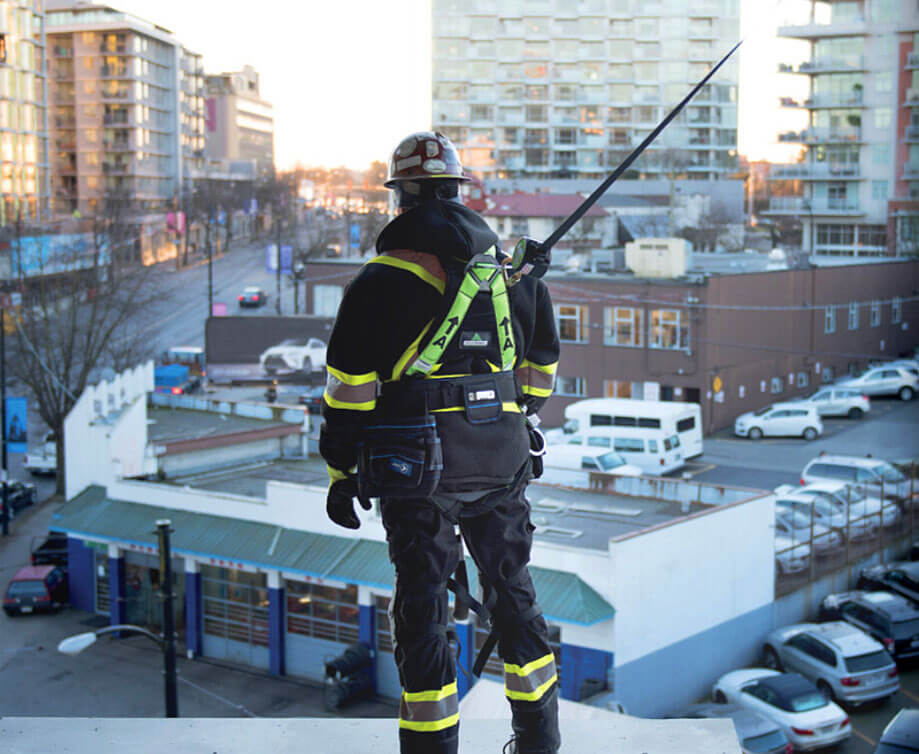
If one reaches the ground before fall gets halted while doing work at a height, the fall arrest system is useless. Therefore, learning how to calculate the fall distance and leave enough clearance is essential.
Fall Arrest System and its Components
A fall arrest system has an anchorage system, a body harness, and a fall-arrest device.
Freefall distance must be kept short with a maximum of 1.8m, or 6ft. The lanyard must be tied to an anchorage connection point above the shoulders, lowering collisions, impact force, and the severity of the damage.
Anchorage points are situated directly to minimize pendular motions and above the user to reduce fall distance. The horizontal distance between the harness and anchorage connection point directly affects the risk of a swing fall. Therefore, roof anchors must be positioned 3m apart at a right angle and fastened along with the traction axis corresponding to the possible fall. The offset angle must not exceed 22°.
Four Factors Considered when Calculating Fall Arrest Distance
Consider the following when calculating the fall arrest distance:
Length: Lanyard, Harness, and Anchorage Connector
The harness length and anchorage connectors must get factored in. The ring distance should get added when calculating a fixed anchor. Computation becomes complicated when the anchor is part of a horizontal lifeline, which is not designed to be tight from the start and can stretch if somebody falls.
When tightening a lifeline, the force exerted to it pulls it farther. Calculate 3% of the tight line’s overall length to 15% of the size of a lifeline utilizing a shock absorber. An engineer should compute the probability of a fall based on the number of individuals tied to the lifeline.
Deceleration Distance
The deceleration device adds 3.5ft. to the length of the lanyard when deployed. During a fall, the harness can stretch, causing the anchorage point to travel higher. Therefore, the distance to be evaluated is not 6ft., but 10.5ft.
Height of the Worker
When the lowest level is 14ft., a fall arrest system that stops a worker at 12ft. is ineffective unless the worker is less than 2ft. tall. To consider the person’s height, at least 5ft. must be added to the computation.
Safety Factor
The minimum clearance necessary for employing a harness as a fall prevention device is usually larger than 15ft.
Steps in Calculating the Required Fall Arrest Distance Measured from a Rigid Anchorage Point
Get the Free Fall Distance
Length of the Lanyard + Height of the back D-ring – Height of the Anchor
- Get the Total Fall Distance
Free Fall Distance + Deceleration Distance + D-ring slide
- Get the Minimal Required Fall Clearance
Total Fall Distance + Safety Distance Factor + Height of Suspended Worker between the feet and D-ring
Add the Safety Factor before the Nearest Obstruction
Conclusion
Safety is a great concern, especially in hazardous jobs. Employers should always guarantee the employees’ safety, and one way of doing so is calculating every step of the way.





